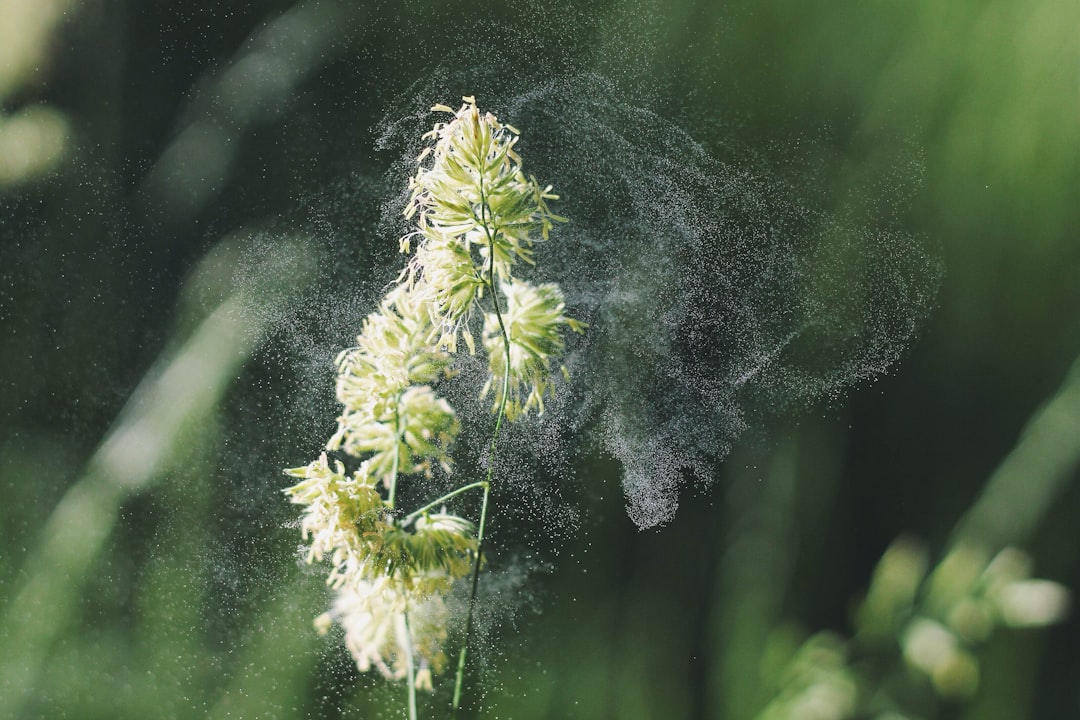Pollen vs. Pollen Grains
What's the Difference?
Pollen is a fine powder produced by the male reproductive organs of flowering plants, while pollen grains are the individual microscopic structures that make up pollen. Pollen grains contain the male gametes of the plant and are responsible for fertilizing the female reproductive organs of the plant. Pollen, on the other hand, is the collective term for all the pollen grains produced by a plant. Both pollen and pollen grains play a crucial role in the reproduction and propagation of flowering plants.
Comparison

| Attribute | Pollen | Pollen Grains |
|---|---|---|
| Definition | Microscopic powder produced by the male reproductive organs of seed plants | Microspores produced by seed plants for the purpose of reproduction |
| Composition | Contains male gametes (sperm cells) and protective outer layer | Contains male gametes (sperm cells) and protective outer layer |
| Size | Varies depending on plant species, typically between 10-100 micrometers | Varies depending on plant species, typically between 10-100 micrometers |
| Function | Carries male gametes to female reproductive organs for fertilization | Carries male gametes to female reproductive organs for fertilization |
| Production | Produced by anthers of flowers | Produced by microsporangia of seed plants |

Further Detail
Introduction
Pollen is a powdery substance consisting of microscopic grains that are produced by the male reproductive organs of seed-bearing plants. These grains play a crucial role in the reproduction of flowering plants by facilitating the transfer of male gametes to the female reproductive organs. Pollen grains, on the other hand, are the individual units that make up pollen. They are tiny structures that contain the male gametes of the plant and are responsible for fertilizing the female ovules.
Size and Structure
One of the key differences between pollen and pollen grains lies in their size and structure. Pollen grains are typically very small, ranging from about 10 to 100 micrometers in diameter. These grains are composed of a tough outer layer called the exine, which protects the male gametes inside. The exine is often elaborately sculpted, with various patterns and ridges that help to distinguish different plant species. Pollen, on the other hand, refers to the collective mass of pollen grains produced by a plant. It can vary greatly in quantity, depending on the species and reproductive strategy of the plant.
Function
Both pollen and pollen grains serve important functions in the reproductive process of plants. Pollen grains are the vehicles that transport the male gametes from the anther of one flower to the stigma of another. This transfer of pollen is essential for fertilization to occur, leading to the production of seeds and the continuation of the plant species. Pollen, on the other hand, acts as a means of dispersal for the pollen grains. It can be carried by wind, water, insects, or other animals to reach the female reproductive organs of a plant. This ensures that pollination can occur even between plants that are not in close proximity.
Composition
Another difference between pollen and pollen grains lies in their composition. Pollen grains are made up of various components, including proteins, lipids, and carbohydrates, in addition to the male gametes. These components provide the necessary nutrients and energy for the pollen grains to survive and function during the pollination process. Pollen, on the other hand, consists primarily of pollen grains but may also contain other substances such as nectar or oils that attract pollinators to the flowers. This additional material can enhance the chances of successful pollination and fertilization.
Appearance
When it comes to appearance, pollen and pollen grains can exhibit different characteristics. Pollen grains are often highly diverse in shape, size, and color, reflecting the wide range of plant species that produce them. Some pollen grains are spherical, while others are elongated or have intricate surface patterns. The color of pollen grains can vary from white to yellow, orange, red, or even black, depending on the plant species. Pollen, on the other hand, may appear as a fine dust or powder that covers the surface of flowers, leaves, or other plant parts. This visible accumulation of pollen can serve as a visual cue to attract pollinators to the flowers.
Environmental Impact
Both pollen and pollen grains have significant environmental impacts beyond their role in plant reproduction. Pollen grains are a major source of allergens for many people, triggering allergic reactions such as hay fever and asthma. The dispersal of pollen through the air can lead to widespread pollen allergies during certain times of the year, affecting human health and quality of life. Pollen, on the other hand, plays a crucial role in maintaining biodiversity and ecosystem stability by facilitating the pollination of plants. This process is essential for the production of fruits, seeds, and other plant products that support a wide range of animal species and ecosystems.
Conclusion
In conclusion, pollen and pollen grains are essential components of the reproductive process in flowering plants. While pollen grains are the individual units that contain the male gametes, pollen refers to the collective mass of these grains produced by a plant. Both pollen and pollen grains play crucial roles in pollination and fertilization, ensuring the continuation of plant species. Despite their small size, these microscopic structures have far-reaching impacts on the environment and human health. Understanding the differences between pollen and pollen grains can help us appreciate the complexity and importance of plant reproduction in the natural world.
Comparisons may contain inaccurate information about people, places, or facts. Please report any issues.